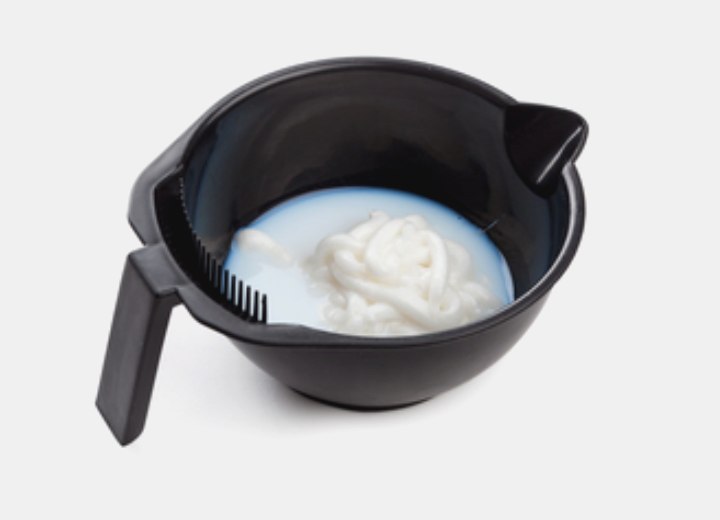Hair Bleaching Issues (2)

After bleaching my hair, I noticed that my roots are still dark at the scalp. Why is this?
Typically, a more likely problem with bleaching the hair is that the color is lighter at the scalp than along the length, because the heat of the body causes the bleaching reaction to work faster and more effectively. However, it is occasionally found among people who are pale-skinned but have dark hair color - and who then bleach their hair - that the hair at the scalp area just below the skin's surface is visible. This is because the skin is likely more translucent than you had expected.
Professional solutions: This kind of issue is not something that can be "fixed" since there isn’t really a good way to alter the density of the skin. However, your hairdresser can help you find a solution in using a toning color to slightly darken the bleached hair to a shade that makes the scalp area less notable, or can help you create a style that will make the scalp (and therefore the darker roots) less visible.
There are some who have used tanning as a solution to this problem, but tanning has its own hazards since even tanning beds can be sources of melanoma.
Well, there are a few factors that can cause this. As mentioned before, heat makes the bleaching mixture react faster and be more effective. So it's very possible that the hair will be lighter at the scalp than along the lengths. Subsequently, the hair lengths that are nearer the skin will be lighter as well due to body heat.
Another thing to know is that bleach is moisture-dependent. If the bleaching mixture is exposed to the air (such as being placed on hair that is left uncovered in a well-ventilated place) and the exterior of the bleach-laden hair begins to dry, then the lightening process will slow down and you will get uneven color results. Remember, hair color mixtures (combining hair color formula and developer) time out after about 30 minutes and go inert, but bleaching mixtures (combining a bleaching agent and developer) remain active as long as they are moist.
And in this same vein, you must have even coverage when applying the bleach. This is another reason to leave such a job to the professionals. You simply cannot see and easily reach all the places on your head and are more likely to have areas that are not as saturated with bleach mixture when trying to do these things yourself.
Professional solutions: Your hairdresser can formulate lighter-strength bleaching formulas to apply to the targeted areas and restore evenness in the color results. These mixtures usually include conditioning agents and are designed to correct the color imbalance while helping prevent any further damage to the hair.

The results you are talking about are referred to as "brassiness" among professionals. It happens because you may have not taken the natural pigmentation of your hair into account when you decided to bleach the color out. Those who have dark brown (warm) hair colors will often go through an orange stage when lightening the hair.
The level of orange in the base pigment can mean that the resulting color is the brassy orange you are referring to. In the case of yellow hair, the result is likely because of a strong yellow (gold) base pigment in the hair, and thus lightening the color reveals this yellow glimmer.
Professional solutions: Depending on the severity of the brassiness, your hairdresser may recommend that you use a bluing, or anti-brass, shampoo that contains a light tint of blue or violet in it to counteract the brassiness. If the brassiness is very pronounced, they might suggest that you have a toning application of a blue or violet-based hair color in the lightness level you have bleached your hair to, in order to counter the orange or yellow tones.
This is basic color correction. If the color problem is too orange, using a blue-based tint will neutralize the orange tones, while a violet-based tint will work for bleaching results that are too yellow. The benefit is that you don't have to use the bluing shampoo, which some people dislike since it can stain their hands and nails with repeated exposure.
©Hairfinder.com
See also:
What can go wrong with hair color services
Hair color levels and peroxide developer
How to get back to your natural hair color
Advanced hair coloring tips - Hair texture and density